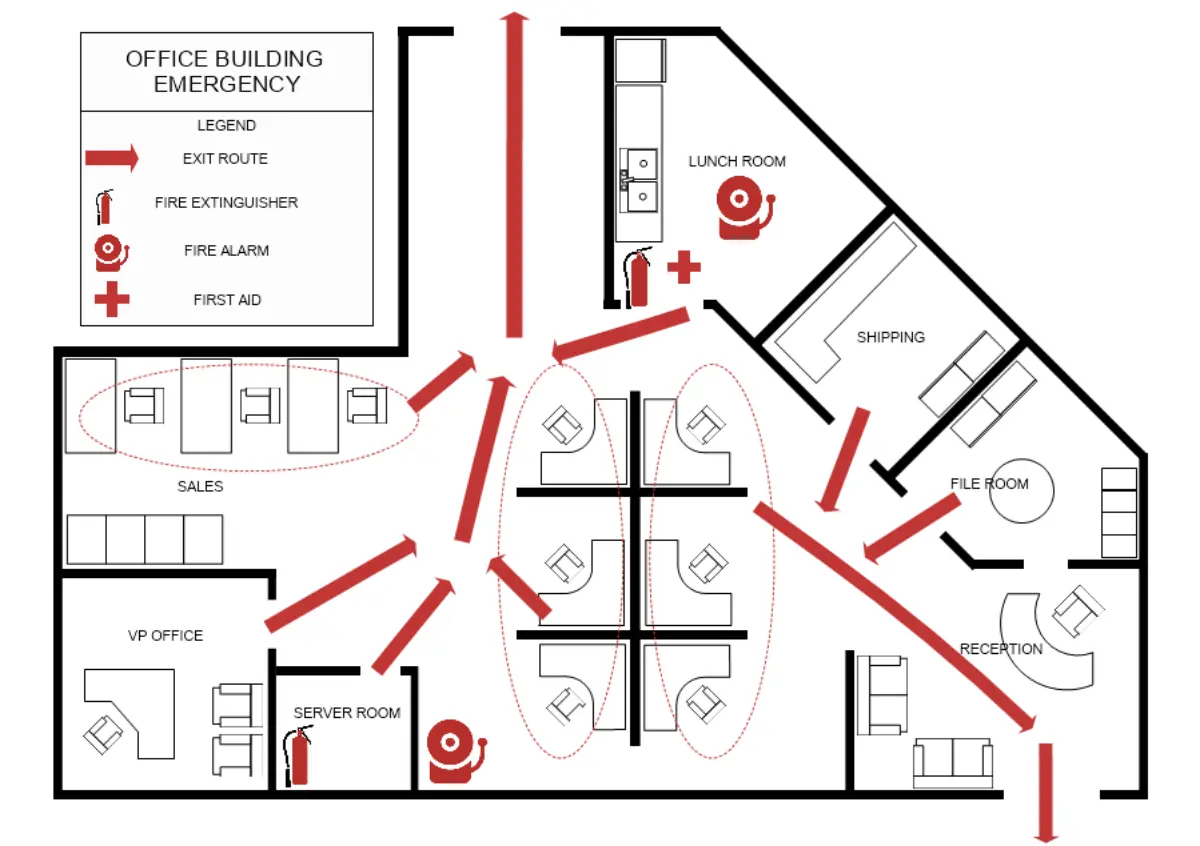When a bomb threat is made—especially in the form of a coordinated phone attack, also known as call bombing—every second counts. Panic can quickly spread, and without a clear action plan in place, confusion may lead to costly mistakes. This is why properly designed and displayed evacuation diagrams play a vital role in helping people exit a building safely, calmly, and efficiently.
In this article, we’ll explain how evacuation diagrams support emergency response, what your team should do the moment call bombing started, and why preparation is your strongest line of defense.
What Is Call Bombing?
Call bombing is a method used to deliver multiple simultaneous bomb threats via phone calls to a business, school, or public institution. These threats often come from anonymous sources and are designed to incite fear, cause disruption, and overwhelm communication systems.
The challenge is not just identifying whether the threat is credible, but knowing what to do as soon as the first call is received. Immediate and structured action is crucial to avoid chaos.
The Critical Role of Evacuation Diagrams
When a bomb threat is received, the goal is to clear the building as quickly and safely as possible. Here’s where evacuation diagrams become indispensable. These visual tools are more than just maps—they’re a regulatory requirement under AS 3745-2010 in Australia, and they guide occupants during emergencies by clearly showing:
- Primary and secondary exit routes
- Emergency assembly points
- Fire extinguisher and first aid locations
- “You are here” indicators for easy orientation
- Instructions specific to bomb threats and suspicious objects
Well-designed evacuation diagrams ensure that even new visitors, contractors, or part-time staff can confidently evacuate without hesitation.
What to Do When Call Bombing Starts
1. Remain Calm and Alert Authorities
Once the first threatening call is received:
- Stay calm and do not hang up. Try to keep the caller on the line.
- Signal a colleague discreetly to contact emergency services.
- Record as many details as possible, including the caller’s voice, background noise, and any specific wording.
This information is vital for law enforcement and can help determine whether the threat is genuine or a hoax.
2. Follow the Bomb Threat Procedures
Your site’s Emergency Control Organisation (ECO) should initiate the pre-planned bomb threat procedure, which may include:
- Checking for suspicious packages without touching them
- Determining the credibility of the threat with emergency services
- Activating an evacuation only if directed to do so or if risk is deemed high
A bomb threat is one of the few emergencies where a full-scale evacuation may not always be the first course of action. This is why specific instructions—like avoiding the use of radios or mobile phones near a suspected device—are crucial and often outlined on emergency procedure signage.
3. Activate the Evacuation Plan
If evacuation is necessary, floor wardens or fire marshals must guide occupants using the designated paths shown in the evacuation diagrams.
Important points during evacuation:
- Use stairs, not lifts.
- Walk quickly but do not run.
- Stay silent so emergency commands can be heard.
- Gather at the external assembly point and await instructions.
Remember, diagrams must be positioned at key decision points—near stairwells, exits, lift lobbies, and open-plan workspaces—so they are visible and easy to follow.
Are Your Evacuation Diagrams Up to Code?
Your diagrams should be reviewed annually and updated whenever:
- The floor layout changes
- New fire equipment is added or relocated
- Exit routes are altered due to construction or redesign
- Regulatory requirements are revised
Providers like First 5 Minutes specialise in creating compliant, easy-to-read evacuation diagrams that are tailored to your building and risk profile. They ensure your diagrams meet Australian Standards and include detailed bomb threat response instructions if required.
Post-Evacuation Protocol: Don’t Let Your Guard Down
Once everyone is at the designated assembly point, building management should:
- Account for all individuals using a roll call
- Wait for clearance from police or bomb disposal units before re-entry
- Communicate updates calmly and clearly
In the aftermath of a threat—real or hoax—document the event, debrief with your team, and refine your emergency procedures as needed. Consider running a follow-up drill to improve response time and confidence.
Final Thoughts
A bomb threat by phone can strike without warning, causing immediate panic and paralysis—unless your team is trained and your premises prepared.
Having clear, accessible evacuation diagrams and a well-rehearsed emergency plan is critical to keeping people safe. When call bombing started, would your staff know what to do?
Don’t leave it to chance. Prepare now, and ensure your evacuation procedures are not just compliant but effective. Because in an emergency, clarity saves lives.
Also Read-How to Choose the Right Online Surgical Tech Program (And Avoid Scams)

